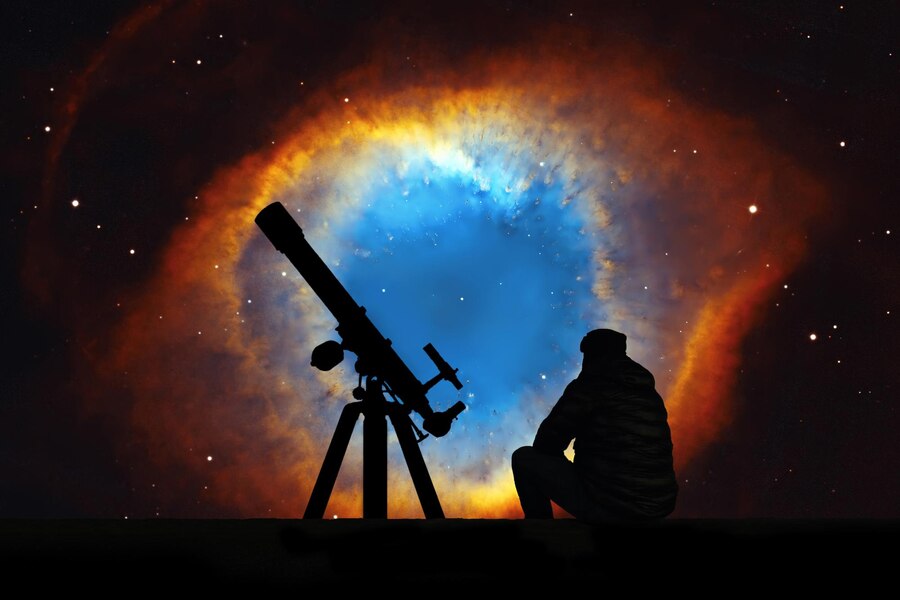Quantum physics is the study of matter
and energy at the primary level. It aspires to uncover the properties and
behaviors of the very building blocks of nature. While many quantum experiments inspect tiny
objects, such as electrons and photons, quantum phenomena are all in the region
of us, acting on every scale. Quantum physics is hard to believe. It’s really
mind-blowing. It’s a science of very small. The branch of physics that studies
the bizarre world of atoms, particles, and waves.
Introduction
Nowadays, it
is a more fascinating thing to learn about quantum physics. Some fundamental
questions arise in science, like how objects behave in the quantum world? Albert Einstein won a Nobel Prize for proving that energy is
quantized. The quanta here are the Plank Constant, named after Max Planck, the godfather of quantum
physics. He was trying to get to the bottom of a problem with our accepting of
hot objects like the sun. Our most fantastic theories couldn’t match the observations
of the energy they dribble out. By proposing that energy is quantized, he was
able to get theory neatly into line through experiments.
Here are just ten facts about quantum physics that might blow your mind
also in 2023
Matter exists as
both particle and wave
1906 J. J. Thomson won the Nobel Prize for
showing that electrons are particles. In 1937, his son George won the same
prize for showing that electrons are waves. Both were right – the phenomenon is
now known as wave-particle duality and is a keystone in quantum physics. At
times the light is best understood as an electromagnetic wave, but at other
times it’s more beneficial to see it as a stream of photons.
Like a giant light bucket, a telescope
collects photons from distant stars. But it can also focus light waves from
those stars and exert pressure on an object. In fact, we are by now using this phenomenon, launching spacecraft with solar sails, with the
chairman of the B612 Foundation, Rusty Schweickart, yet indicative that we
may be able to maneuver asteroids off collision courses with Earth.
Energy comes in multiples of quanta
The quantum world is like a shoe store. The connection between the
quantum world and shoes is comparable to the relationship between the subatomic
world and energy. Shoes don’t come in sizes that match your feet accurately, so
you must choose between pairs in predetermined sizes. The same
goes for energy; it only comes in multiples of the same “quanta” —
hence the name quantum physics.
Something
can exist in two dimensions at the same time
One
of the main known theories regarding quantum physics is that objects can be
in two places simultaneously. This is well-known as superposition, first discovered in
1927 by physicist Erwin Schrödinger, and it proposes that an object’s existence
is spread out over time and space. This resources that if you were to measure
the position of an electron on one side of a barrier, it could, in fact, be in
two locations at once. The idea that an object can exist in multiple states at
once seems like something out of science fiction but is the basis of the famous
Schrodinger’s cat thought experiment. The cat’s fate is gritty by a
quantum device, illustrating how quantum mechanics is counterintuitive and that the
cat can exist in two states – dead and alive.
5.
Stars
are characterized by quantum physics
Danish
Physicist Niels Bohr showed us that electrons in atoms come in clusters like
grapes on a vine, known as energy levels. When an electron jumps
from a higher to a lower energy level, it releases energy as
light. In the same way, if you put more electrons into an atom at high energy
levels, it absorbs light of those frequencies. Astronomers use this effect to
identify the composition of distant stars. When we break up their light into a
rainbow-like spectrum, we see missing colors – representing the
presence of specific chemical elements and permitting us to work out the
constituents of stars and what elements they contain, clues to their
age, and other characteristics.
6.
There
is strong evidence pointing towards a possible multiverse
Quantum physics suggests that parallel universes may exist where every probable outcome has happened and
continues to happen in some other universe. It also proposes that we could travel between these parallel universes by manipulating the fabric of space-time itself! An explanation of quantum physics, Copenhagen,
states that observation collapses the wave function and forces reality to formulate
a quantum choice. The many worlds’ interpretation argues that there isn’t
really a choice. In its place, at the moment of measurement, reality splits
into two versions in which we witness two different outcomes.
Imagine a quantum particle as a ball being
bounced between two mirrors. Every time the ball hits one of the mirrors, it
bounces off in a different direction and continues bouncing for an infinite
amount of time. Physicists call this phenomenon decoherence.
7.
It is the basis behind why the sun shines
When
you look up at the sun, you see the light created by nuclear fusion in
its core. Nuclear fusion is the process of two protons coming together to
create a larger particle. This larger particle can be anything from
helium to heavier elements like carbon, oxygen, and iron. When these exact
charges repel one another (which physicists term the Coulomb barrier), this
causes them to give off light in a process called fluorescence, hence helping
the sunshine.
8
Stars don’t really go away, I completely
Eventually,
the sun will die. Our star will collapse from gravity, but not completely. As
it gets smaller, more particles are crammed together. Here, the Pauli Exclusion
Principle, which states that certain particles, like electrons, cannot stay alive
in the same state, comes into play. This means that quantum physics prevents
the star from collapsing beyond a certain point by releasing extra energy
whenever gravity tries to crush it further down. Essentially, dead stars don’t
actually collapse into black holes as we might expect – instead, it takes on
the form of what we now know as a white dwarf.
9.
Black holes disappear over time
The
Heisenberg uncertainty principle states that you can’t wholly know two
properties of a system at the same time. For example, if you want to know
exactly where something is in space, you can’t know exactly how fast it moves. In 1974, Stephen Hawking understood that black holes are
not entirely black but emit radiation. This happens at a black hole’s
boundaries, where some particles escape while others are swallowed by the black
hole. Eventually, the black hole will evaporate as they are
constantly shedding mass and energy.
It accounts for the size of the
universe
In the beginning, there was the Big Bang Theory.
Then in the 1980s, that theory was modified to comprise a different theory,
inflation. A new idea was formed that the universe grew rapidly before quantum
fluctuations linked to the Heisenberg uncertainty principle could disappear. As a result, energy is concentrated in some areas rather than
others – seeds around which material can gather to form the clusters of
galaxies we can watch now. In fact, everything from galaxies to planets
is formed from quantum fluctuations in space-time itself!
Things can get disturbing
Quantum physics also has some bizarre
implications for our everyday lives. These include weird effects like quantum
entanglement, where two particles can be connected to
affect each other no matter how far apart, and quantum tunneling, where an object can pass through an energy barrier with
faster-than-light communication. These bizarre phenomena permit particles
separated by vast distances to be or stay connected at a quantum level; it’s
like an invisible force connecting them, almost like magic!
Conclusion
Quantum physics is a blend of math and logic,
so it is the right subject for people who love solving puzzles.
So what’s
next?
Whereas
we’re still in the early stages of quantum technology capacity, the realms of potential
are becoming apparent. Quantum use will enable scientists and researchers to:
• Accelerate drug and material
development in healthcare.
• Enhance national security and support defense.
• Boost productive mineral
exploration and water resource management for mining and other sectors.
• Improve secure communications for
industries like Space.



